Space
Sign up for our newsletter
We summarize the week's scientific breakthroughs every Thursday.
-
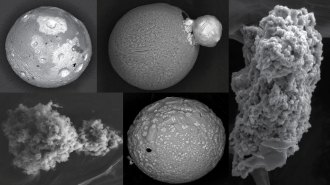 Planetary Science
Planetary ScienceEarth sweeps up 5,200 tons of extraterrestrial dust each year
Thousands of micrometeorites collected from Antarctica come from both comets and asteroids, a new study suggests.
By Sid Perkins -
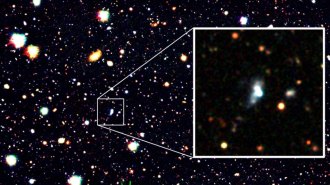 Astronomy
AstronomyA record-breaking, oxygen-starved galaxy may be full of gigantic stars’ shrapnel
The newly discovered galaxy may have once been home to stars more than 300 times as massive as the sun — a peek at conditions in the early universe.
By Ken Croswell -
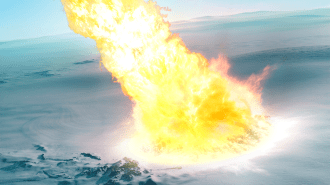 Planetary Science
Planetary ScienceA meteor may have exploded over Antarctica 430,000 years ago
Tiny spherules recovered from a mountaintop suggest a space rock broke apart midflight and sprayed debris across thousands of kilometers.
By Sid Perkins -
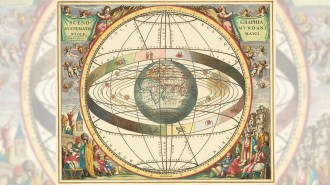 Cosmology
CosmologyPhysicists’ devotion to symmetry has led them astray before
If dark matter WIMPs are mythical, they join the ancient idea that the planets moved in circles.
-
 Physics
PhysicsUranium ‘snowflakes’ could set off thermonuclear explosions of dead stars
Uranium crystals that settle in the cores of white dwarfs could trigger nuclear chain reactions that blow the dead stars apart, a new study suggests.
-
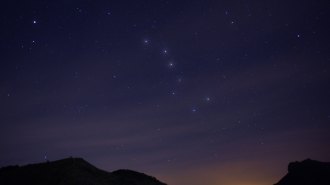 Astronomy
AstronomyHere’s why humans chose particular groups of stars as constellations
Distances between stars, their brightnesses and patterns of human eye movement explain why particular sets of stars tend to be grouped together.
-
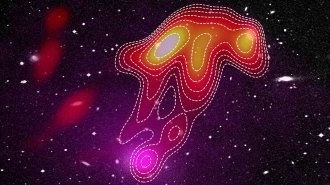 Astronomy
AstronomyThe ‘USS Jellyfish’ emits strange radio waves from a distant galaxy cluster
The unusual pattern of radio waves dubbed the USS Jellyfish tells a story of intergalactic gas meeting black hole by-products.
By Ken Croswell -
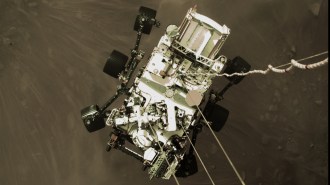 Space
Space50 years ago, experiments hinted at the possibility of life on Mars
In 1971, lab experiments suggested organic molecules could be made on Mars. Fifty years later, robots are searching for such signs of life on the planet itself.
-
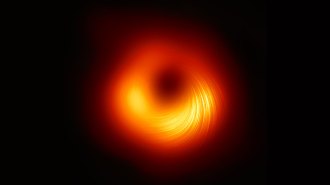 Astronomy
AstronomyA new black hole image reveals the behemoth’s magnetic fields
A new analysis of Event Horizon Telescope data from 2017 brings to light the magnetic fields twisted around the black hole at the core of galaxy M87.
-
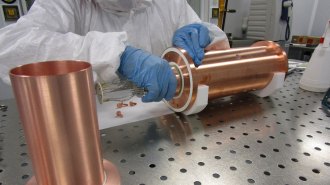 Cosmology
CosmologyThe dark matter mystery deepens with the demise of a reported detection
Early results from an experiment designed to replicate one that hinted that dark matter is made up of WIMPs came up empty-handed.
-
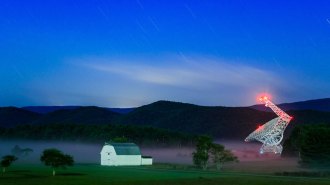 Astronomy
AstronomyCarbon-ring molecules tied to life were found in space for the first time
Two types of polycyclic aromatic hydrocarbons in the Taurus Molecular Cloud are far more abundant than predicted.
-
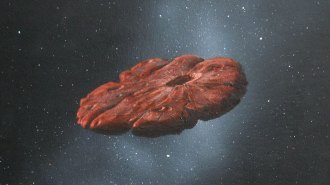 Space
Space‘Oumuamua may be a chip knocked off an icy, Pluto-like exoplanet
If the first interstellar visitor were a shard of nitrogen ice, it would explain some of its unusual behavior when it passed through our solar system.